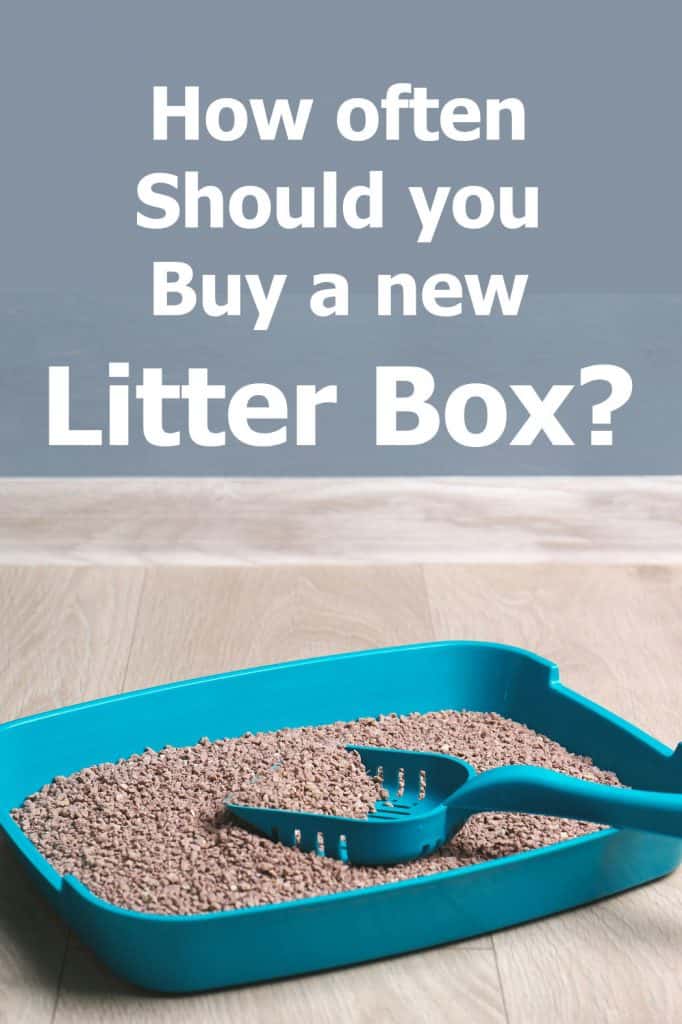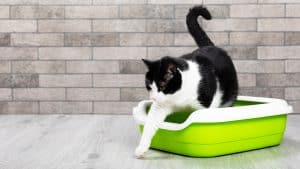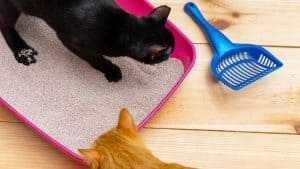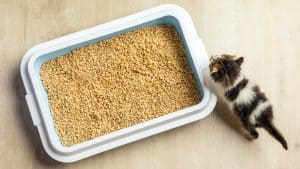Ever found yourself staring at your cat's litter box and thinking, "Is it time to replace this?" "Do I need a new litter box?" We've all been there, and trust us, we understand the dilemma.
How long is a litter box supposed to last, anyway? And how can you tell when it's finally time to give it the old heave-ho? The answers to these questions aren't as straightforward as you might think.
The lifespan of a litter box depends on several variables, from the quality and durability of the box itself to the number of cats using it.
Sometimes, even your cat's unique quirks can play a role. But don't worry, we have the answers and explanations to these questions and concerns.
In this comprehensive guide, we'll walk you through the key factors influencing your litter box's lifespan and offer some helpful tips to help you make the most of your current box. Moreover, we'll show you the tell-tale signs that it’s time to replace it.
But first, a little teaser: Did you know the scratches on your cat's litter box could be more than just an eyesore? They might also be a health hazard! Stay tuned to find out why.

The Lifespan Of Your Cat's Litter Box
A typical budget-friendly plastic litter box, serving a single feline, generally requires replacing after a year of use. But don't take this as a golden rule!
A more durable, higher-quality box might serve your furry friend faithfully for a much longer stretch. On the other hand, an inexpensive box catering to a clowder of cats might need retiring sooner than you'd think.
Essentially, the replacement frequency of your cat's litter box hinges on several factors. The durability of the litter box, the wear and tear it endures, the number of cats using it, and the unique needs of your cat all play a part.
When Is It Time To Replace The Litter Box
If it’s not completely falling apart on you, it may not be obvious that it’s time to replace your kitty’s litter pan. So, here are three signs to look for that will let you know you need to go shopping for a new one.
Sign #1: Visible Scratches
The first reason for needing to replace your cat’s litter pan is that it gets scratched. Whether it’s from the cat’s claws as they dig to do their business or from the scoop as you remove clumps, even microscopic scratches can be bad.
What happens is that those scratches are impossible to properly clean. So, over time, they get filled with bacteria. Then, when your cat digs, the bacteria are flung into the air where they can breathe it in. When you clean the litter box, you’re then at risk of inhaling the bacteria.
And if your cat happens to be scratching at the side of the box - read this guide to discover why he or she is doing that.
When you can see that the plastic has been damaged, then it’s time to get a new litter pan. Some less obvious indications that there’s physical damage to the plastic include:
- Dirty lines that can’t be scrubbed clean
- Rough spots
- Moist particles sticking to certain parts of the box
Sign #2: Unremovable Odors
Another problem that comes with these scratches is foul odors. Waste matter can also get trapped in even the smallest of scratches. The plastic then absorbs the odor, and it becomes impossible to get rid of. This is a problem for both the human and feline occupants.
Cats have more sensitive noses compared to people, which means they have to face a strong foul odor when using the litter pan. But the bigger problem is that when the smell is so strong, they may believe the pan to be too dirty.
When a cat thinks the litter box is too dirty, they’ll look for somewhere else to go, like the bathtub. Or your bed. Even if they go on a hard floor near the litter box, it’s far from ideal to have to clean fecal matter or urine from other areas of your home.
You should thoroughly clean the litter box every few months with a scrub brush and pet-safe cleaners. If after scrubbing the box and air-drying it outside, there are still lingering odors, you’ll probably want to replace the box.
Sign #3: Clouded Plastic
Although plastic is pretty durable, it won’t stay the same as the day you bought it. It will go through some chemical changes over time, and those changes could cause some serious problems for your home.
The ammonia in urine damages plastic. Over time, the plastic will become brittle and could even begin to break apart. Although the plastic itself isn’t dangerous as it starts to break down, it could make a huge mess if it falls apart when you go to move a full litter box.
Depending on the color and type of plastic you have, it may be difficult to tell if it’s become clouded. However, if you notice any changes in the color of the litter box, it’s likely to become damaged by the ammonia.
This means it will start absorbing more bacteria and odors, so you should replace it before the damage gets worse. If left for long enough, the plastic may start to break down. That’s when you run the risk of the whole thing coming apart on you.
How to Make Litter Boxes Last Longer
To get the most out of your litter box, there are a few things you can do. However, you have to weigh the actual cost of lengthening the lifespan of a litter box with the cost of replacing them. As you’ll see, some of these are free or inexpensive.
Litter Box Liners: The Secret To A Long-Lasting Litter Box?
This is by far the most expensive way to extend the life of your litter box, but it can also be the most helpful. By using litter box liners, you can protect the plastic from scratches. These also make cleaning out the box faster and easier.
How Shielding From Direct Sunlight Can Prolong Your Litter Box's Life
When exposed to direct sunlight, some types of plastic can become degraded and brittle. If that happens to your litter box, it means needing to replace it much sooner.
So, be sure to keep your litter box in an area where it won’t get any direct sunlight.
The Power Of Regular Cleaning: Extending The Lifespan Of Your Cat's Litter Box
By regularly cleaning out your cat’s litter box, you can put off replacing it for much longer. Plan on cleaning the litter pan with soap, water, and some pet-safe cleaners about once a month.
During this time, you can also check it for any damage that may indicate it’s nearing the end of its life.
See This Pet-Safe Cleaner Here
Baking Soda: A Cheap Trick To Keep The Box Fresh And Long Lasting
Another way to help keep the litter box clean is by adding baking soda. Baking soda is inexpensive and does more than lengthen the life of the pan. It also helps reduce odors and makes cleaning a breeze.
By absorbing harmful bacteria and odors, baking soda prevents these from being absorbed by the plastic.
The Benefit Of Multiple Boxes: Less Wear And Tear, Longer Life
If you have several cats all using one box, it’s going to wear out significantly faster. There will be more claws to scratch more often, and you’ll have to scoop it out several times a day to keep up with it.
All these reasons and more are why you should have more litter boxes than you do cats.
Finalizing Your Decision: When to Upgrade Your Litter Box
So, how often should you replace your litter box? As you now know, the answer depends on a number of factors. Because litter boxes wear out over time, they need to be replaced every so often.
There are also things you can do to extend the life of your litter boxes, such as keeping it clean and using litter pan liners.
What do you think of this post? How often do you replace your litter boxes? Did we miss any tricks for expanding their life? Please comment below as we’d love to hear from you!





The part about the scratches is interesting. Thanks!
I was just wandering y would one cat after gets out of the litter box throw litter on the floor and 1 other cat who was a feral don’t cover up number 2
Hi Tanya,
This is actually not uncommon. For litter that gets thrown around, you can try a box with higher sides or even a covered box. For a cat who doesn’t cover up properly, there’s not a lot you can do. This happens with some cats (not necessarily former ferals).
You keep adding to the litter as you clean the debris out. But how often and/or should you throw out all
the litter in the pan and start with all fresh litter. Thank you.